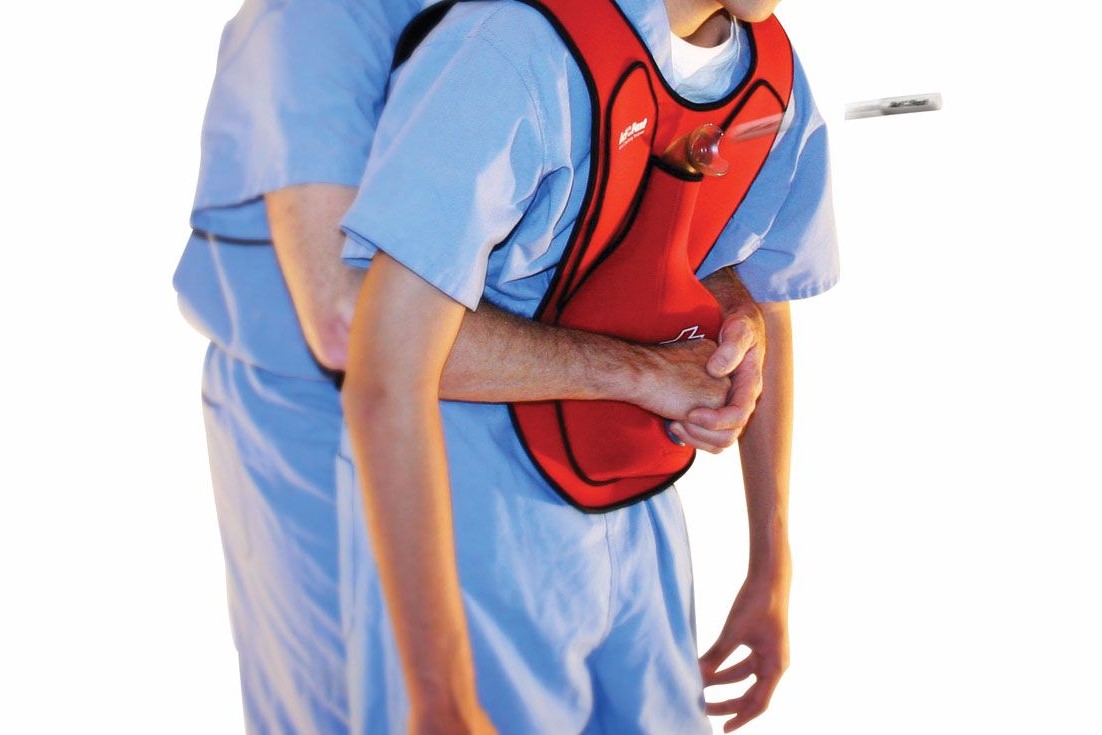
Heimlich Maneuver: Find out what it is and how to do it
Heimlich Maneuver is lifesaving, first aid method used for choking emergencies. It is only safe to perform on people who can’t breathe on their own
DO YOU WANT TO KNOW RADIOEMS? VISIT THE RADIO RESCUE BOOTH AT EMERGENCY EXPO
What is Heimlich Maneuver
The Heimlich maneuver consists of a series of under-the-diaphragm abdominal thrusts and back slaps.
The technique is recommended for a person choking on food, foreign object, or anything blocking the airway.
A choking person cannot speak, cough, or breathe.
An extended period of airway obstruction can eventually lead to loss of consciousness and, worse, death.
During the application of abdominal thrust, be mindful of the use of too much force.
Exert appropriate pressure not to bring any damage to the person’s ribs or internal organs.
Only use it if the back slaps fail to relieve the airway obstruction on a conscious person.
If done incorrectly, abdominal thrusts can be painful and even injure the person.
Use this first aid method only in adults and when there is an actual emergency.
If the person is unconscious, it is best to do chest compressions.
For infant and toddler choking, a different technique may apply.
Seek advice from a health care provider or a child’s pediatrician on the proper first-aid technique to use.
TRAINING: VISIT THE BOOTH OF DMC DINAS MEDICAL CONSULTANTS IN EMERGENCY EXPO
Heimlich Maneuver for Infants (Newborn to 12-month-old babies)
First, place the infant stomach-down position, just across the forearm.
Support the head and jaw using one hand.
Give five quick, forceful back slaps between the infant’s shoulder blades.
If the object did not come out after the first attempt, turn the infant over on their back, supporting the head.
Give five chest thrusts using two fingers to push the breastbone, just between the nipples.
Push down a couple of times and then let go.
Repeat back slaps and chest thrusts until the object is removed or when the infant can breathe normally again.
If the infant becomes unconscious, have someone call emergency number immediately.
Continue rescue efforts under the instruction of the emergency dispatcher and until an ambulance arrives.
Heimlich Maneuver for Toddlers (Ages 1-8)
Start with positioning the child by bending them over at the waist. Place the hand under the chest for support.
Give five back blows using the heel of the hand. Position this back slaps in between the child’s shoulder blades.
Please the fist under the child’s breastbone as you put your arms around them.
Cover the fist with another hand, keeping it in a lock position.
Thrust the fist upward into the child’s abdomen.
Perform the thrusts quickly and repeat them up to four times until the blocked object dislodges.
Call emergency number after completing the Heimlich maneuver once.
It is best to know that emergency help is on the way while keeping the child stable.
Heimlich Maneuvers for Adults
If an adult can breathe, cough, or make a sound, let them try to get the object out by continuing coughing.
If concerns and other symptoms start to appear, call emergency services and proceed with the Heimlich maneuver.
Get into position by standing or kneeling behind the person and wrap your arms around their waist.
If the person is in a standing position, place your legs in theirs to provide support if they lose consciousness.
Make a fist using one hand and place the thumb against the person’s belly area (above the belly button but below the breastbone).
Grab the fist with the other hand and give a quick upward thrust in an attempt to pop the object out.
Exert extra force for an adult as the situation may require it.
Repeat the abdominal thrusts until the object pops out or until the person loses consciousness.
Read Also:
Emergency Live Even More…Live: Download The New Free App Of Your Newspaper For IOS And Android
Perform First Aid On A Toddler: What Differences With The Adult?
Stress Fractures: Risk Factors And Symptoms
RICE Treatment For Soft Tissue Injuries
How To Carry Out Primary Survey Using The DRABC In First Aid
First Aid For The Elderly: What Distinguishes It?


